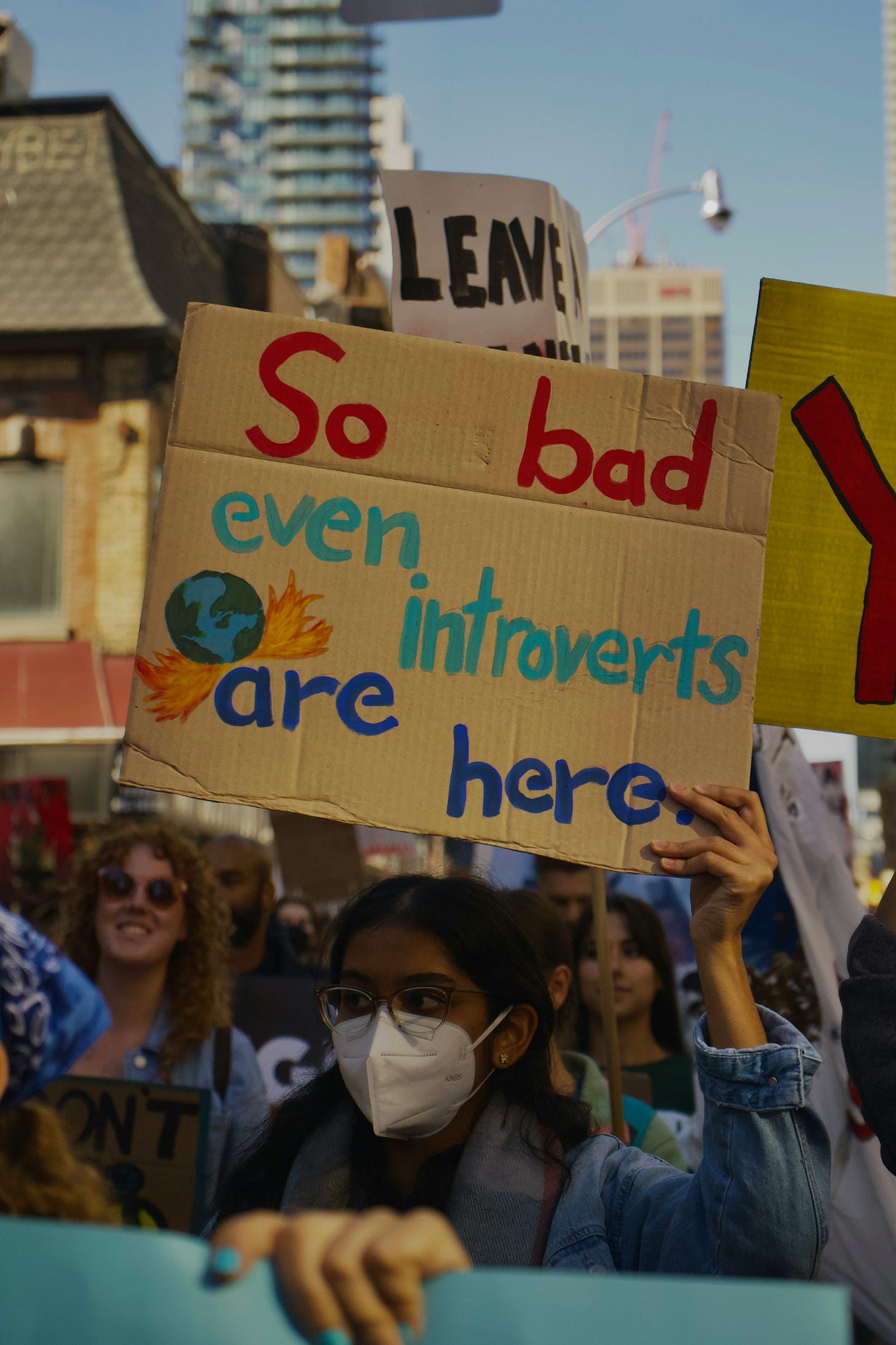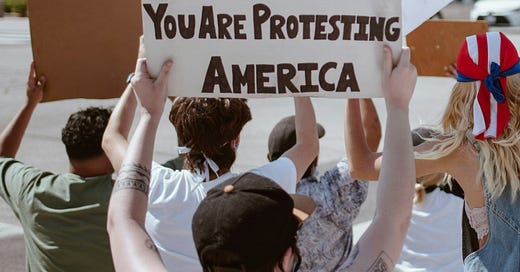I’ve been thinking a lot about ceremony this week.
I thought about it when I watched Cory Booker performing a ceremony for 25 hours on the Senate floor—holding that sacred space and enacting an appeal for change, an appeal to our higher selves. I’ve been thinking about it as I hear of impromptu protests springing up at the state capitol, or outside the Northwest Detention Center. And I’m thinking about it, in anticipation of this Saturday, April 5th, when hundreds of thousands of people across the United States are expected to rally against the current administration’s devastating attack on our government, the constitution, and well, everything.
It’s easy to think that actions like these are pointless—that they’re “just symbolic.” But oh, Honey, never tell a religious studies professor that something is '“just symbolic.” Because symbols have the power to change the world.
To understand what I mean, I want to introduce you to a classic in ritual studies, The Magic of Ritual: Our Need for Liberating Rites that Transform Our Lives and Our Communities, a book by theologian and ritual studies professor Tom Driver.1
For Driver, ritual is far from being a waste of time. It’s powerful stuff. In fact, he even uses the word magic, arguing that if ritual and ceremony are done right, they can change everything. How? Because in ritual we give voice and form to the world as it should be. With our own bodies, we enact this world we want to see, and in so doing we affirm that vision, and draw it closer.
Symbols are the buildings blocks of this alchemical formula of ceremony. When we employ symbols that represent our highest values and ideals, when we don’t just talk about those virtues, but physically embody them, we bring those ideals into lived experience.
For Driver, ritual and ceremony are particularly vital “to those in need, especially those who, having little social power, and being the victims of injustice, have a need for the social structure to be transformed.”
The magic of ritual, he argues, is that it serves to express and transform social relationships, changing not just our internal world (how we feel about or understand our circumstances) but also the relational world in which we live.
Of course, not all rituals are good—a ceremony can inspire conformity or obedience to unjust systems–but they can also empower people to resist.
There is a reason that autocrats have a tendency to suppress ceremonies, and outlaw symbols.
There’s a reason that the United States and Canada outlawed Native American and First Nations ceremonies–imprisoning and denying food to people who dared gather in prayer, in defiance of a colonial regime.
There is a reason that slave-holding states violently suppressed the religious freedom of enslaved people and sought to control Black-led independent churches.
There’s a reason that segregationists were terrified of activists sitting in at lunch counters, or crossing a bridge. And a reason that apartheid-era South Africa outlawed prayerful gatherings.
In his book, Driver describes one such gathering, in which anti-apartheid activists pinned their prayers to a cross. Even though, had they been discovered, their participation in this ceremony of protest could have meant imprisonment or death.
Driver’s focus is not on the polite and pretty ritual of a June wedding, but on the ceremonies that express a life-or-death thirst for justice.
As Driver argues, “ritual magic is the principle technique available to oppressed peoples for the transformation of their historical situation. Rational political methods alone cannot bring about the transformation of society from a less to a more just condition, because they cannot fuse the visionary with the actual as rituals do, thus profoundly affecting moral life…Ideas require flesh and blood performance.”

Ritual is “neither detached contemplation of the world nor a passive symbolization of it, but is the performance of an act in which people confront one kind of power with another, and rehearse their own future.”
Part of the power of ceremony is because ritual spaces—like a good old fashioned protest— are liminal spaces. They are times out of normal time, when the status quo can be temporarily turned on its head. When the power of the carnival, and the camp, and the comedic open up new ways of thinking, new possibilities for being, and new spaces for solidarity.

These are spaces of “no-saying,” of affirming what society and culture refuse, of unmasking the pretentious, of elevating persons and things of low degree, when the mighty are pulled from their high places. These are the spaces where the last come first.
In Driver’s theorizing, ceremonies of protest are rich with transformative power because they are a means of enacting a vision of the world we want to see. And they do it through that rich use of symbol. Ritual brings “the far-away, the long-ago, and the not-yet into the here and now… It produces effects not simply in the minds but also in the bodies of its performers.”
This week, Senator Booker was rehearsing and enacting a different kind of future, taking a political and a physical risk in doing so. This Saturday, thousands more will be bringing their bodies into the streets. There will be the carnival and the comedic. There will be witty protest signs. There will be solidarity. And there will be anger, and sorrow, and frustration, transmuted into action.
But believe me, there’s nothing “just symbolic” about it. Because symbol, and ritual, is the language of world making. It’s the magic that wakes us up, and reminds us of who we are, who we ought to be, and how we’re going to get there.
On A Different Note, I’ve Got Some News…!
Pardon my pivot, but I wanted to close this brief piece with some good news. I’m pleased to officially announce a forthcoming book!
Deciding on the right home for this project has been a journey, and I’m really delighted to be working with Richard Brown and the team at Bloomsbury. It’s my first trade book (a book intended for general audiences, as opposed fellow academics or college classrooms), and I’ve got this Substack to thank for helping me think in a different way about writing, and bringing Indigenous and religious studies to a broader audience. Thanks, y’all!
So, if you hear a little less from me in the coming months, this is why! I won’t disappear—I’ll keep you posted on how the writing is going and will share some of the things I’m thinking about as I go.
But for now, let’s get out those art supplies, and start making some kick-ass protest signs.
Tom F. Driver is professor emeritus of theology and culture at Union Theological Seminary in New York and former chair of the Haiti Task Force of Witness for Peace.







This is such a thoughtful, hopeful piece. Thank you for putting these ideas together. And CONGRATULATIONS on your book deal!! How exciting! 👏❤️🔥💓